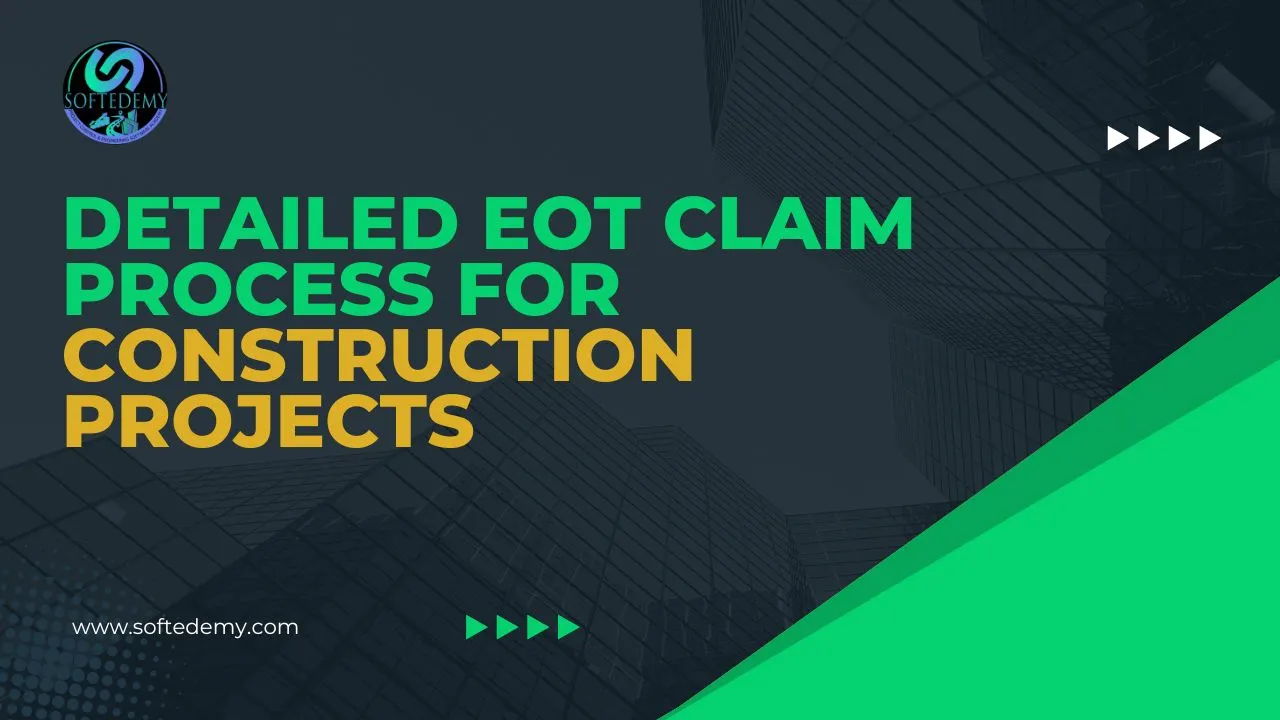In construction, an Extension of Time (EOT) refers to the additional time granted to complete a project beyond the originally agreed-upon completion date. The process for submitting an EOT claim involves several critical steps to ensure the claim is justified, well-documented, and aligns with the contractual requirements. Here’s a detailed breakdown of the EOT claim process:
1. Identification of Delay Events
Identify and Document Events: Document all events causing delays, such as weather delays, design changes, site conditions, or delays by other contractors.
Categorize Delays: Classify delays into compensable, non-compensable, concurrent, and excusable delays.
2. Documentation Gathering
Collect Relevant Documentation: Gather all necessary documentation, including project schedules (baseline and updates), daily progress reports, correspondence, change orders, site diaries, logs, and weather reports (Bibloteka) (Construction Front).
3. Analysis of Delay Impact
Assess Impact: Analyze the impact of each delay event on the project schedule, considering its duration and criticality. Use established delay analysis techniques such as the Critical Path Method (CPM) or Time Impact Analysis (TIA) (Construction Front).
4. Preparation of EOT Claim Document
Comprehensive EOT Claim: Prepare a comprehensive document outlining reasons for the delay, its impact on the project schedule, and justification for the extension.
Include Clear Narrative and Evidence: Provide a detailed narrative describing each delay event, supported by documentation such as photos, letters, and meeting minutes (Bibloteka) (Quantity Surveyor Blog).
5. Quantification of Time Extension
Quantify Additional Time: Calculate the amount of additional time required to complete the project, taking into account all delay events and their cumulative impact on the schedule (Construction Front).
6. Review and Approval
Submit for Review: Submit the EOT claim document to relevant parties, such as the client or main contractor, for review and approval. Allow for negotiation and discussion to resolve any disagreements (Turtons Lawyers).
7. Formal Documentation
Issue Formal Documentation: Once approved, formalize the extension of time by issuing a Variation Order or Change Order, amending the contract to reflect the revised completion date (Bibloteka).
8. Implementation and Monitoring
Update Project Schedules: Update project schedules and other relevant documentation to reflect the approved extension.
Monitor Progress: Continuously monitor progress against the revised schedule to ensure the project remains on track to meet the new completion date (Quantity Surveyor Blog).
Additional Considerations
Mitigation Efforts: Demonstrate that all reasonable efforts to mitigate the delay were taken.
Cost Implications: Address potential claims for delay costs, such as site office costs, site overheads, and head office overheads (Quantity Surveyor Blog).
Legal Entitlement: Ensure the claim aligns with the contractual framework and legal requirements to justify
























































